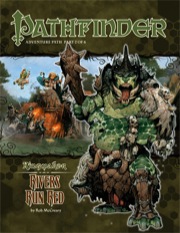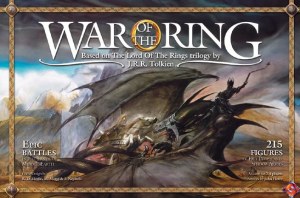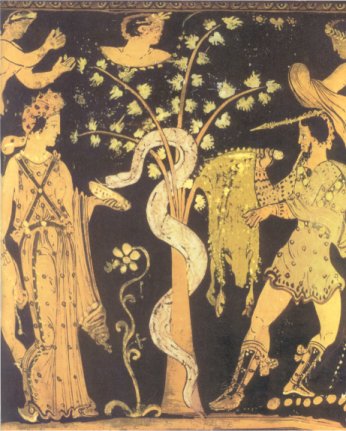This sort of project mostly collapsed in favor of episodic single-session roleplaying centered on one particular element of the fantasy kingdom: the great deeds of individual heroes. This style of play was necessarily somewhat limited by time constraints and the need to keep all players engaged at once. In the 70s, play-by-mail games were pretty common and face-to-face meetings were major events. So it seemed "normal" to have players (mostly hardcore wargame hobbyists) spend most of a month slowly designing their private castles and armies. But during the peak-fad years of the early 80s, game audiences shifted toward younger players and more fluid groups with a steady rotation of inexperienced players. Only the dungeon-delving subgame could really meet the needs of that social environment.
Trying to reintegrate the kingdom-management game with the heroic-adventure game to create an ur-RPG is difficult. RPG heroes tend to rapidly accumulate power in ways that totally circumvent the need for participation in normal society, zooming from chumps to demigods in a matter of months through the power of level-grinding. Any realistic simulation of the ways in which actual medieval nobles worked to accumulate their own little fiefdoms would get in the way of your standard high-fantasy plotline!
What I'd really like to find is a fully procedural (i.e., based on just-in-time dice rolling, not purchasing a "campaign setting") strategic system that will
- Generate a reasonable-looking random world environment
- Allow players to run a small kingdom or duchy, making meaningful decisions that balance off the usual 4X priorities
- Field armies to fight miniature battles when the sides are evenly matched, or quickly simulate the outcome of those battles if they look lopsided or otherwise boring
- Allow for personal development of a few named leaders of those kingdoms, through the traditional "treasure-seeking and monster-slaying" RPG
Here are a few products on the market today that try to add the strategic layer back into games, and my assessment of each of them.
 Renegade Crowns This is notionally a product for Warhammer Fantasy, but it's virtually system independent. It uses a vast array of tables to generate an entire region of random fantasy principalities, full of cruel greedy despots. The book is of high quality and is full of flavor and dark humor. It really performs only one function, however -- world-building. There are no rules for actually managing the militaries or economies of those political organizations. It's essentially a setting-design workshop for a GM who wants to create plot-hooks for a high-level campaign that revolves around politics.
Renegade Crowns This is notionally a product for Warhammer Fantasy, but it's virtually system independent. It uses a vast array of tables to generate an entire region of random fantasy principalities, full of cruel greedy despots. The book is of high quality and is full of flavor and dark humor. It really performs only one function, however -- world-building. There are no rules for actually managing the militaries or economies of those political organizations. It's essentially a setting-design workshop for a GM who wants to create plot-hooks for a high-level campaign that revolves around politics. Kingmaker This a Paizo adventure path which adds both a lightweight kingdom simulator and a set of mass combat rules. (The rules are freely available as open-source content though the SRD, using the links provided.) The implementation is minimalist, but has extremely high production standards, including a beautiful customizable city map. The focus of simulation is towns and the buildings used to develop them, rather like cities in Civilization. This is essentially a self-contained mini-game which uses abstracted resources (BP) and consists of balancing three competing priorities represented by single-value statistics (Stability/Loyalty/Economy) in city development. Each structure either generates income or improves a statistic. The rules are revised and indexed in the recently-released Ultimate Campaign sourcebook.
Kingmaker This a Paizo adventure path which adds both a lightweight kingdom simulator and a set of mass combat rules. (The rules are freely available as open-source content though the SRD, using the links provided.) The implementation is minimalist, but has extremely high production standards, including a beautiful customizable city map. The focus of simulation is towns and the buildings used to develop them, rather like cities in Civilization. This is essentially a self-contained mini-game which uses abstracted resources (BP) and consists of balancing three competing priorities represented by single-value statistics (Stability/Loyalty/Economy) in city development. Each structure either generates income or improves a statistic. The rules are revised and indexed in the recently-released Ultimate Campaign sourcebook. Birthright This set of rules was originally developed by TSR for second edition D&D, then abandoned after the takeover by WotC. Unofficial rules have since been developed for 3e by a volunteer online community. It's highly setting-specific (based on the concept of magical bloodlines), and some central game aspects would be hard to adapt to a new setting. Battles can be resolved either through direct dice-rolling based on relative strength, or by a detailed tactical battle. Naval units are nicely differentiated, and heroes can join the battle directly by treating their adventuring parties as units.
Birthright This set of rules was originally developed by TSR for second edition D&D, then abandoned after the takeover by WotC. Unofficial rules have since been developed for 3e by a volunteer online community. It's highly setting-specific (based on the concept of magical bloodlines), and some central game aspects would be hard to adapt to a new setting. Battles can be resolved either through direct dice-rolling based on relative strength, or by a detailed tactical battle. Naval units are nicely differentiated, and heroes can join the battle directly by treating their adventuring parties as units. An Echo, Resounding This is a system very similar to Paizo's, but with less emphasis on a single settlement and more on the surrounding environment. Here the stats are Military/Wealth/Social, but they work in much the same way. It supports a unique Asian-flavored setting, and lots of well-written examples of how to use domain management and prepare a map. It's weakly-linked "minigame" that sits on top of an existing campaign, allowing players to make a few domain-scale decisions at the beginning/end of each night of standard RPG play. It's the work of a single author, Kevin Crawford, and yet in many ways it manages to be quite competitive with Paizo's rules. But while Paizo is more interested in 3e/OGL compatibility, this set of rules is obviously designed to interface with 1e/2e version of D&D. (It advertises compatibility with the Labyrinth Lord retroclone, but has so few linkages to other rules that it could be used for anything pre-3e with only minor changes.)
An Echo, Resounding This is a system very similar to Paizo's, but with less emphasis on a single settlement and more on the surrounding environment. Here the stats are Military/Wealth/Social, but they work in much the same way. It supports a unique Asian-flavored setting, and lots of well-written examples of how to use domain management and prepare a map. It's weakly-linked "minigame" that sits on top of an existing campaign, allowing players to make a few domain-scale decisions at the beginning/end of each night of standard RPG play. It's the work of a single author, Kevin Crawford, and yet in many ways it manages to be quite competitive with Paizo's rules. But while Paizo is more interested in 3e/OGL compatibility, this set of rules is obviously designed to interface with 1e/2e version of D&D. (It advertises compatibility with the Labyrinth Lord retroclone, but has so few linkages to other rules that it could be used for anything pre-3e with only minor changes.) Adventurer, Conqueror, King (ACKS) This is the "crunchiest" system on the market, with emphasis on realistic demographics and economics. It's built on top of the old Basic rules, plus a few imported ideas like a 2e-style THACO system for hits, as a sort of alternate-universe version of the rather-different endgame in the Rules Cyclopedia. It's really working hard to provide as much detail as possible, and as a result, it would be hard to run without a spreadsheet to keep track of all the information involved. It's an approach that heavily emphasizes stronghold-building and merchant-trading operations which are absent or highly abstracted in other systems. In that sense, it looks less like a post-Sid Meier simplification-of-design approach ("reduce everything to block granularity and single functions") and more like a 70s-era wargame. You can pretty much design a castle from the ground-up, using grid paper, and figure out exactly how much it costs and precisely how many troops can be garrisoned there. There are extensive supply and command rules. And so forth.
Adventurer, Conqueror, King (ACKS) This is the "crunchiest" system on the market, with emphasis on realistic demographics and economics. It's built on top of the old Basic rules, plus a few imported ideas like a 2e-style THACO system for hits, as a sort of alternate-universe version of the rather-different endgame in the Rules Cyclopedia. It's really working hard to provide as much detail as possible, and as a result, it would be hard to run without a spreadsheet to keep track of all the information involved. It's an approach that heavily emphasizes stronghold-building and merchant-trading operations which are absent or highly abstracted in other systems. In that sense, it looks less like a post-Sid Meier simplification-of-design approach ("reduce everything to block granularity and single functions") and more like a 70s-era wargame. You can pretty much design a castle from the ground-up, using grid paper, and figure out exactly how much it costs and precisely how many troops can be garrisoned there. There are extensive supply and command rules. And so forth.All of these systems look interesting, but I think my inclination is toward ACKS for a few reasons:
- Most other systems assume that you start with a long RPG campaign, and pin the strategy game onto the end of it. I'm too impatient to run a long campaign of RPG modules before getting to "the good stuff" with armies and castles. And in any event, I know more about wargames than I do about RPGs.
- The majority of systems above involve a party of adventurers pooling resources to run a single kingdom, which each party member playing a specific role. I'm more interested in a quasi-competitive game in which each player gets a separate kingdom to run. ACKS lets you fill out your own private roster of vassals and henchmen, giving you your own team of heroes (at various stages of career development) to run all at once.
- There's a good deal of research behind the rules, so that (for example) the duration of sieges in the game will be very similar to the duration of historical sieges, or (for another example) the fraction of your population in cities will be very small compared to the number of rural serfs required to support them. I'm a simulationist at heart, and I love knowing the exact number of peasant families in my realm!
So I'm thinking that I'll use the ACKS rules, but add in a subsystem to randomly generate a terrain map (or really, borrow it from my own FF project for some playtesting!) and then reference the map to determine the value of a domain that includes certain hexes. This makes it definitely worth searching around for special features (lakes, mines, timber, that sort of thing), rather than just rolling and then inventing those details after the fact to explain the roll. I want to recapture some of the feel of Imperial Starfire, where you could roll up an amazing binary-star system with three habitable planets at maximum mineral value and a tidelocked moon!










